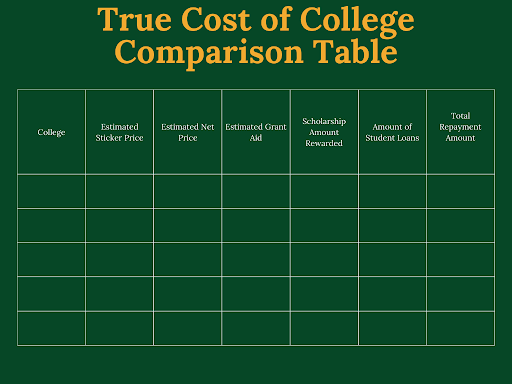
Pixabay user TBIT
Many college applications do cost some amount of money. However, the fee, if any depends on the school. Some colleges and universities in the United States can charge over $75 to apply to the school while others completely waive the fee, inviting students to apply free of charge. But this college application fee is only the tip of the iceberg when it comes to college expenses this early in the game. Private colleges are businesses.
Why Do College Applications Cost Money?
College applications generally cost money to help fund the application review process. Schools can receive tens of thousands of applications, and checking every single application and essay takes time (and money). Charging a fee for students to apply helps cover that cost.
What Other Expenses Can You Expect When You Apply to Colleges?
The actual college application fees are only part of what students can expect to spend during their application process. Three other costs you should plan for include:

1. Travel Expenses
You should always visit a college campus before you agree to attend the school. This will help you decide if the college is right for you or not. Many students discover they love or hate the school after a visit. But visiting campuses costs money. Between gas or plane tickets, food, and a hotel room, travel expenses can add up.
2. ACT/SAT Prep and Test Fees
The ACT and SAT both have test fees that need to be paid every time you sit for the exam. You can also be charged for late cancellations or date changes.
Tutoring and prep materials such as books and physical flashcards can also add to your SAT/ACT expenses, making college much more expensive.
3. Transcript Fees
High schools and colleges can charge transcript request fees every time they need to send your information to the college you’re applying to. If you need official transcripts directly from your high school or former college, these costs may be unavoidable. High school transcript transfers can range from free to $15 and college transcript transfers tend to be between $10 and $12.
5 Quick Tips to Lower Your College Application Costs
Thankfully, there are ways to lower your college application costs. These four tips could easily save you hundreds of dollars.
1. Take the SAT/ACT Only Once
It is generally recommended that you take the SAT or ACT more than once, but if you’re on a tight budget and don’t qualify for test waiver fees, taking the exam once can save you quite a bit of money. You will have to ensure you’re properly prepared for the test though if you take this route since you won’t have any do-overs.
2. Cut Down on Test Prep Costs
Tutoring, books, and study guides can be expensive for the SAT/ACT, but there are actually plenty of free resources students can take advantage of. Both the College Board (administrator of the SAT) and the ACT offer study tools online for students. There are also plenty of study apps that can help you get prepared for either exam.
And instead of getting a tutor for the SAT/ACT, opt for a free study group at your school or talk to your teachers about creating one.
3. Apply for Waivers
Students with demonstrated financial need can apply for fee waivers for the ACT, SAT, and college applications. If you’ve already been approved for an ACT/SAT waiver, it is actually much easier to get approved for a college application waiver, too. Many colleges detail how to apply for a waiver right online, but if you’re unclear about how to apply, be sure to reach out to their admissions department as soon as possible.
4. Apply to Schools with No Application Fee
Not all colleges and universities in the United States charge interested students an application fee. You may want to consider looking into more schools that waive this fee altogether in order to save some additional cash.
Check out these colleges with no application fee.
5. Visit Colleges After You’ve Been Accepted and Use Online Tours
Visiting all of the schools you’re even remotely interested in can get expensive fast, but even just visiting a single college out of state can be extremely costly! Instead of trying to view all of the campuses before you’ve submitted your applications, it may make more financial sense to wait until after you’ve received an acceptance letter.
In the meantime, you can check out official online tours from the school or even student-made videos of the campus. While this won’t allow you to explore the college the way you want to, it still provides valuable information without major travel expenses.
Everyone knows that college expenses can add up quickly, even before the student attends their first class. Planning ahead and using the cost-effective tips listed above, though, can help cut down on these expenses and make college applications much more affordable.
Did you know that College Raptor offers a number of FREE resources that make applying for college more affordable? And if you’re looking to cut down on costs even more, we recommend using our Scholarship Search tool to start finding awards you qualify for that could save you potentially thousands of dollars on tuition.





